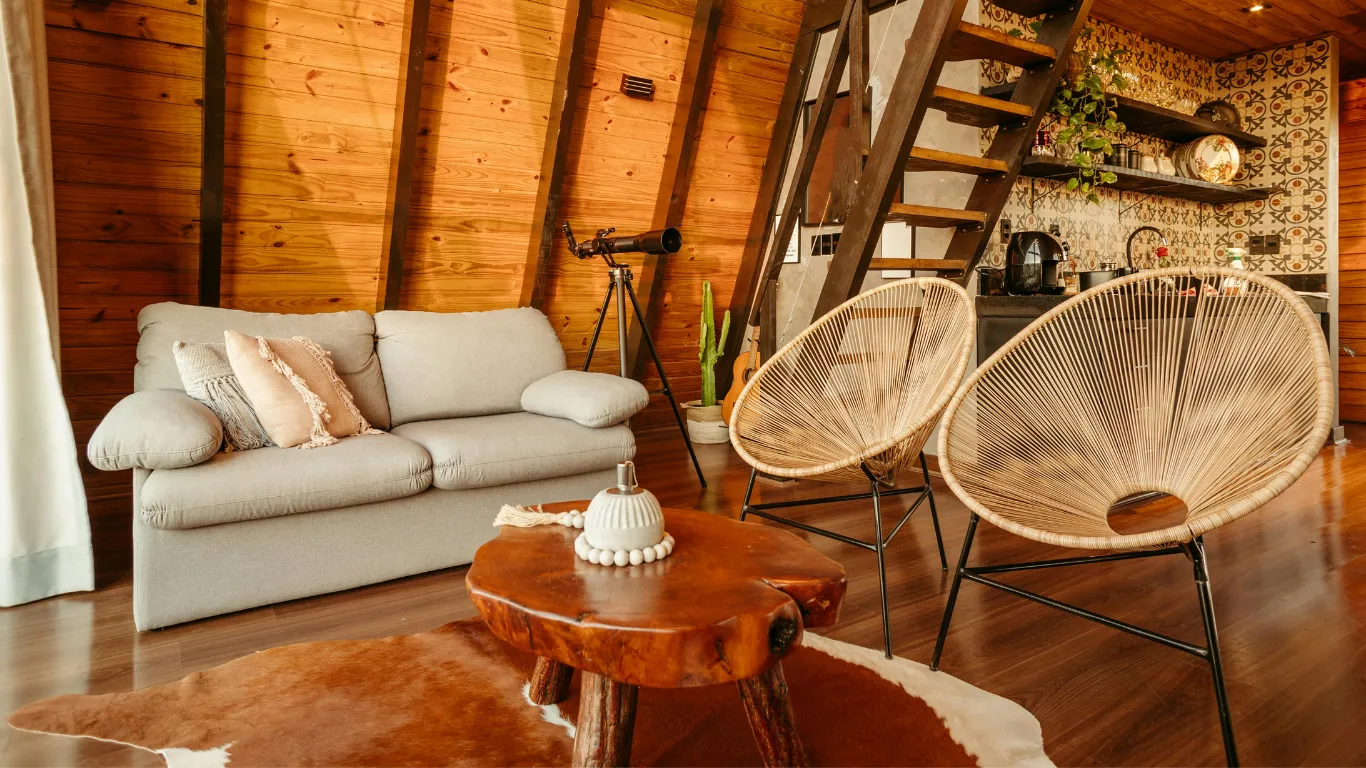At some point, we all face that classic home design dilemma, when we choose what looks stunning, or what actually makes life easier. It’s the tug-of-war between style and comfort, between a picture-perfect space and one that truly serves our everyday needs. But modern homes don’t ask us to choose anymore. Today’s design philosophy combines both worlds, creating spaces that look good and make sense.
Sustainable living is all about this balance, designing homes that support how we live while being kind to the planet. And we do not talk here only about solar panels or energy-saving bulbs; we talk about smarter choices that improve comfort, efficiency, and well-being. Whether it’s a cozy reading corner with natural light or a sit-stand desk that keeps you active during the workday, studying, modern living is about spaces that adjust to you and your mode of life.
Smart Living: More Examples to Live with Functionality and Comfort
Home automation has quietly turned convenience into a form of sustainability. Picture a kitchen where hidden compartments rise at the touch of a button, keeping everything organized and clutter-free. Or a bedroom where a TV lift appears only when you need it, elegantly and efficiently. Motorized windows bring in fresh air without wasting energy, while automated beds adjust perfectly for comfort or health needs.
And of course, height-adjustable desks aren’t just trendy as they’re part of a bigger move toward personalized spaces that go with your lifestyle. These small innovations help reduce waste, use energy smartly, and create homes that evolve with time instead of wearing out.
Designing for sustainability means designing for longevity – homes that grow, adapt, and respond to you rather than the other way around. It’s not about having more tech, but about making that tech work with you to build a simpler, better-balanced way of living.
From Heavy Decor to Smart Minimalism
Fifteen or twenty years ago, home design often meant filling every corner with furniture – the bigger, the better. People proudly displayed massive wooden cabinets, wide sofas, and large TV stands as symbols of comfort and success. Kitchens were packed with cupboards and drawers, leaving little free space but plenty to show off.
Today, the trend has completely reversed. Modern homeowners value space, light, and simplicity. They still want comfort and convenience, but in a cleaner, smarter way. Technology now allows all those same functions, storage, entertainment, and relaxation to exist without clutter. Hidden shelves replace bulky cabinets, slim adjustable tables replace oversized ones, and even appliances can disappear into walls or lift from hidden compartments.
Minimalism is no longer about having less; it’s about using space wisely. Every object serves a purpose, every corner feels open, and the home itself becomes calmer, lighter, and more alive.
Energy Efficiency Through Smart Design
True sustainability begins with how a home uses and saves energy. Automated systems have become one of the easiest ways to control this balance and still feel comfortable without sacrificing comfort. Smart thermostats, for instance, learn your habits, lowering the temperature while you’re away and warming up the space just before you return. This small change can cut energy waste dramatically while keeping your environment perfectly comfortable.
Motorized window shades are another simple but effective upgrade. They open automatically to let in daylight during cooler hours and close when the sun is strongest, reducing the need for artificial light or air conditioning. When paired with energy-efficient windows and natural materials like bamboo or cork, they form a powerful combination that keeps the home both sustainable and stylish.
In the kitchen, induction cooktops save energy by heating only the pan and not the surrounding air, while motion-sensor faucets minimize water waste. Even your lighting can work smarter, for example, LED systems with dimmers and sensors adjust automatically based on time of day or occupancy. Together, these small design decisions can lead to big energy savings over time, proving that sustainability often starts with subtle, smart choices.
The Future of Personalized Sustainable Living
What truly defines a sustainable home today is how well it adapts to the people who live in it. Flexibility and personalization have become just as important as energy savings. Furniture and fixtures that move, shift, and transform are redefining what it means for a home to “fit” its owners.
Take adjustable and multifunctional furniture – a wall bed that folds down only when needed, freeing up space for yoga or playtime. Or modular sofas that can be rearranged for family gatherings or compact living areas. In smaller urban homes, motorized storage systems that slide vertically or rotate within closets help maximize every inch of space while keeping rooms clean and clutter-free.
Smart automation is also bridging comfort with health. For example, adjustable lighting systems can mimic the natural progression of sunlight throughout the day, helping regulate our sleep cycles. Air quality sensors detect humidity or pollutants and activate purifiers automatically, while smart irrigation systems in gardens ensure plants get just the right amount of water.
Even entertainment systems are getting an eco-conscious twist: TV lifts and retractable screens reduce dust and wear, extending product life. Meanwhile, voice-activated controls and AI-based monitoring apps track resource use, helping homeowners make greener choices in real time.
Sustainability extends beyond eco-friendly design; here we’re talking about building a home that adapts, supports, and improves the way you live. The goal isn’t to fill spaces with technology, but to create harmony between design, comfort, and responsibility. The smartest homes of the future won’t simply be powered by innovation; they’ll be shaped by people who value a lifestyle that’s efficient, thoughtful, and truly in tune with how they live every day.







